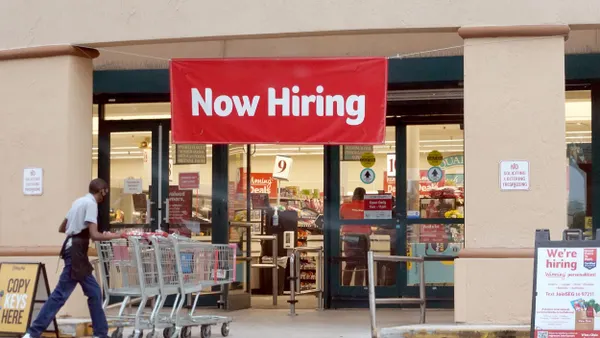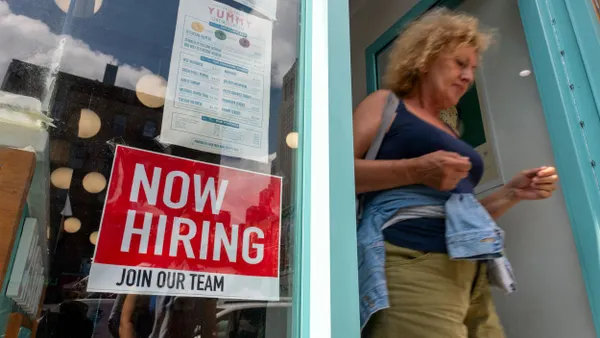Dive Brief:
- The tight labor market could get even tighter if the jobless rate dips to 3.5% as forecast, Axios reports. Mark Zandi, chief economist at Moody's Analytics, said during a call with reporters that the rate could hit a low only seen twice since the records began in 1948.
- Employers' struggle to fill jobs could get even more challenging a year from now, forcing them to raise wages, loosen hiring standards and invest more money in training, says Axios. Zandi's unemployment prediction is even lower than the Federal Reserve's figures of 3.6% to 4.0%.
- A U.S. Bureau of Labor Statistics report shows that wages and benefits rose 2.6% in 2017, proof that the labor market still favors workers. But with data from the National Bureau of Economic Research, the Labor Market Concentration report shows that wages in rural areas, where mergers regularly occur, have been kept down.
Dive Insight:
Wages have remained flat for several quarters, but employers may have to lift them to combat the labor shortage. Employers should be ready to make whatever hiring adjustments they can, which could mean recruiting workers without all the job qualifications they want (but solid soft skills) and then training them up in the technical skills employers require.
Whatever employers decide to do to fill jobs, their labor costs will rise. More large retailers are beginning to offer paid leave and other benefits to hourly employees, who don't usually receive access to such. Even companies like McDonald's are feeling the pinch by raising wages and offering tuition assistance to compete for workers.
It's not all bad for employers just yet. The new tax law ostensibly funds these new benefits through the savings it may grant employers in the coming year.












